|
About
SSAS-C
Board
of Directors • Suggested
Readings • Links
• Talks
|
Our
Purpose
From the moment a baby is born he is surrounded by a world
of people with their voices, touches, faces, songs, movements
and much more. He is ready to learn about his social world
and how it works. The research on ASD (Autism Spectrum Disorder)
has largely neglected the role these kinds of experiences
have for the growing baby, infant, and toddler. The Society
for the Study of ASD and Social-Communication (SSAS-C pronounced
Sassy) is dedicated to learning how social experiences impact
the child who may develop ASD.
For
years the discussion about the causes of ASD has been dominated
by two opposing and fruitless ideas. The first was that
ASD is preordained at the moment of conception by the genes
of the parents and how they came together. End of story.
Nothing else really mattered after that. After years of
research, it is now estimated over 200 separate genes may
be involved in the cause of ASD, each one generally having
only a small effect.
The
second was ASD is caused by toxins. These toxins, be they
vaccines or innumerable other possible chemicals, would
somehow reach and damage the child’s social brain.
The vaccine idea after much study has been shown to be without
merit. Now researchers are exploring the role other possible
prenatal environmental toxins might play in the cause of
ASD.
|
 |
Worldwide, countless
millions of dollars have been spent researching these two ideas.
Is the cause of ASD genetic or is it a toxin or both? Meanwhile
the number of children and families impacted by ASD continues
to increase relentlessly year after year.
We
in SSAS-C believe that babies, infants, and toddlers pay close
attention to the world they are born in to and that these experiences
matter. We can break down these experiences into two groups. The
first is social. This is when a living person reacts and responds
to the young child with a smile, a touch, a kiss, a song, a word
and above all magical loving eye contact. These experiences shape
the formation of the ‘social brain’ for a lifetime.
The second is non-social or everything else that happens to capture
the attention of these young developing children.
In
the last fifty years there has been a gradual and relentless competition
by various commercial interests to capture and hold the attention
of our very young children from the time of birth and before.
Our children’s exposure to computer tablets, electronic
toys, television, and other video screens during this time period
has exploded from virtually none to the point where these objects
have now come to dominate the waking life of our newborns, infants,
and toddlers. These non-social experiences, marketed every day
by large and influential corporations, BLOCK social experiences
and development and lead many children especially boys to develop
ASD.
| 
|
The American
Academy of Pediatrics has steadfastly opposed exposure
to video screens in children less than two years old but
the commercial world has shamefully and systematically
ignored this recommendation.
In contrast
to the hundreds of millions of dollars spent studying
the roles of genetics and toxins in ASD, virtually no
resources have been spent inquiring whether our youngest
children are vulnerable to and impacted socially by screen-time
in ways we not understand. Remediating this blindness
is the key purpose of The Society for the Study of ASD
and Social-Communication (SSAS-C).
We further
believe this is the research that will open the door to
prevention of ASD. Perhaps a few simple changes in the
conduct of infancy such as the elimination of screen-time
can greatly diminish the number of children and families
impacted by ASD in the future much as a simple change
in sleeping position did for Sudden Infant Death Syndrome.
Perhaps this research will lead to more effective therapeutic
protocols for older children and adults impacted by ASD.
Please explore
our web site and help us.
|
Board
of Directors

President
Leonard Oestreicher MD |
Leonard
received his medical degree from the University of California,
San Francisco. His completed his residency and a fellowship
in Family Practice in Merced, California. He went on to
open a private practice in Merced where he continues to
practice family medicine with the Merced Faculty Associates
group at the Lifetime Medical Care site.
Concurrently
with his medical practice, Dr. Oestreicher has been an
entrepreneur. He developed a medical office software package
which was offered as a turnkey package to local physician
offices. After selling this first business, he formed
Moonlight Development Group, LLC to develop and manage
commercial office space in Merced and nearby areas.
He
has three grown children and through a second marriage
to Roseli Oestreicher a 10 year old daughter, Giovanna.
He has developed a passion for Autism and ASD after getting
to know his afflicted nephew, Otto. He is the author of
"The Pied Pipers of Autism: How Television, Video
and Toys in Infancy Cause ASD".
The
Pied Pipers of Autism
|

Board
Member
Michael Waldman |
Michael
Waldman is the Charles H. Dyson Chair in Management
and professor of economics at the Samuel Curtis Johnson
Graduate School of Management at Cornell University. He
is a widely recognized expert in applied microeconomic
theory, and he has published in many of the top journals
in economics. He has also served in various editorial
positions at top economics journals including co-editor
at the Journal of Economic Perspectives from 2000-2006,
associate editor at the Quarterly Journal of Economics
from 2000-2014, and editor at the Journal of Labor Economics
from 2009-present. Professor Waldman is listed in various
editions of Who’s Who in Economics, Marquis Who’s
Who in America, and Marquis Who’s Who in the World.
He holds a PhD in economics from the University of Pennsylvania.
In
recent years, Professor Waldman has been applying rigorous
statistical methods to the study of possible links between
early-childhood TV viewing and autism spectrum disorders.
His 2006 NBER working paper titled “Does Television
Cause Autism” and 2008 JAMA Pediatrics publication
titled “Autism Prevalence and Precipitation Rates
in California, Oregon, and Washington Counties”
have drawn the attention of top media outlets including
the Wall Street Journal, ABC’s “Good Morning
America,” Time, Slate, and others. He is continuing
to conduct empirical research on the relationship between
TV viewing and autism spectrum disorders with co-author
Sean Nicolson, Professor in Cornell’s College of
Human Ecology and a research associate at the National
Bureau of Economic Research.
|

Board
Member
Samuel M. Randolph |
Samuel
is a lifelong learner, following developments in neuroscience
and psychology with a focus on issues related to shifts
in human handedness. In that context, the work being done
by SSAS-C and Dr. Oestreicher are of great interest to
Samuel.
Samuel
is the author of "Hidden Handedness: The Emerging
Story of Handedness Reversals".
Hidden
Handedness: The Emerging Story of Handedness Reversals
|
Suggested
Readings
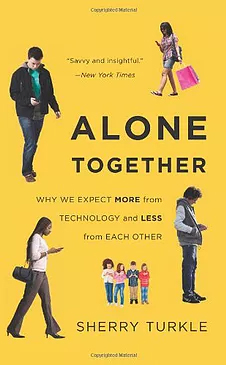 |
Alone
Together: Why We Expect More from Technology and Less
from Each Other
by: Sherry Turkle
Technology
has become the architect of our intimacies. Online, we
fall prey to the illusion of companionship, gathering
thousands of Twitter and Facebook friends and confusing
tweets and wall posts with authentic communication. But,
as MIT technology and society specialist Sherry Turkle
argues, this relentless connection leads to a new solitude.
As technology ramps up, our emotional lives ramp down.
Alone Together is the result of Turkle's nearly fifteen-year
exploration of our lives on the digital terrain. Based
on hundreds of interviews, it describes new unsettling
relationships between friends, lovers, parents, and children,
and new instabilities in how we understand privacy and
community, intimacy, and solitude.
Alone
Together on Amazon.com
|
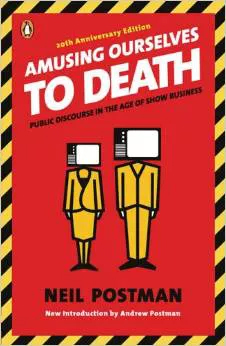 |
Amusing
Ourselves to Death: Public Discourse in the Age of Show
Business
by: Neil Postman
Originally
published in 1985, Neil Postman’s groundbreaking
polemic about the corrosive effects of television on our
politics and public discourse has been hailed as a twenty-first-century
book published in the twentieth century. Now, with television
joined by more sophisticated electronic media—from
the Internet to cell phones to DVDs—it has taken
on even greater significance. Amusing Ourselves to Death
is a prophetic look at what happens when politics, journalism,
education, and even religion become subject to the demands
of entertainment. It is also a blueprint for regaining
controlof our media, so that they can serve our highest
goals.
Amusing
Ourselves to Death on Amazon.com
|
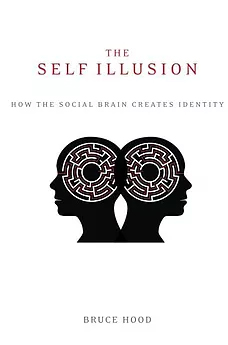 |
The
Self Illusion: How the Social Brain Creates Identity
by: Bruce Hood
In
The Self Illusion, Bruce Hood reveals how the self emerges
during childhood and how the architecture of the developing
brain enables us to become social animals dependent on
each other. Humans spend proportionally the greatest amount
of time in childhood compared to any other animal. It's
not only to learn from others, Hood notes, but also to
learn to become like others. We learn to become our self.
Even as adults we are continually developing and elaborating
this story, learning to become different selves in different
situations--the work self, the home self, the parent self.
Moreover, Hood shows that this already fluid process--the
construction of self--has dramatically changed in recent
years. Social networking activities--such as blogging,
Facebook, LinkedIn, and Twitter--are fast becoming socialization
on steroids. The speed and ease at which we can form alliances
and relationships are outstripping the same selection
processes that shaped our self prior to the internet era.
Things will never be the same again in the online social
world. Hood offers our first glimpse into this unchartered
territory.
The
Self Illusion on Amazon.com
|
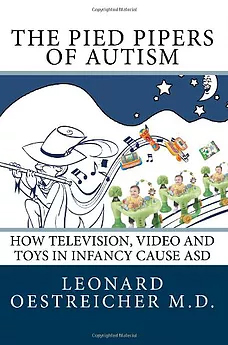 |
The
Pied Pipers Of Autism
by: Leonard Oestreicher
This
book shows the increase in autism has been fueled by the
invasion into the nursery of sources of one-way communication
such as TV, videos, video devices and talking toys. The
book shows it is these Pied Pipers of Autism, who have
been enchanting our children away from normal social development
and into the fearful social isolation of ASD. This well-illustrated
book will hopefully get the attention of the soon-to-be
parents, pediatricians or anyone who advises parents,
and researchers in the autism field. It is aimed at people
who care for infants and children and anyone whose life
has been touched by a child with ASD. The Pied Pipers
of Autism provides a new and badly needed understanding
of Autism Spectrum Disorder.
The
Pied Pipers Of Autism on Amazon.com
|
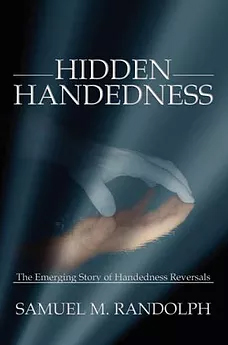 |
Hidden
Handedness
by: Samuel M. Randolph
Children
whose dominant handedness is purposefully reversed may
undergo profound alterations in their developing brains.
"Hidden Handedness" tells this story from an
autobiographical point of view. The story opens with the
experiences of an adult who learns at age 41 that he belongs
to a group of people whose handedness had been reversed.
Such people are called "submergees" in the book.
The surprising discovery initiates a return journey in
which the submergee becomes an emergee: one who migrates
back by reversing behaviors relating to handedness, experiencing
an amazing rebirth of body and mind.
"Hidden Handedness" reviews supporting research,
looks at biographies of famous submergees such as President
Ronald Reagan, and uses stories to help complete the picture.
Anyone who wishes to investigate the untold story of handedness
reversals and returns would do well to begin with this
book.
Current research findings concerning plasticity in the
adult brain, glia, mirror neurons and therapies such as
Constraint Induced Therapy, provide growing support for
the story told in "Hidden Handedness." This
largely untouched terrain of the body and mind beckons
to those who may be submergees and those who wish to know
more about them.
Hidden
Handedness on Amazon.com
|
Links
The
Extreme Male Brain Theory of Autism
The
Son-Rise Program
Brain
Science Podcast
Talks

Talk
To Give To Parents (Sept 16 2017).docx

The
Benefits of the Upcoming Study - The Talk 2.docx
|